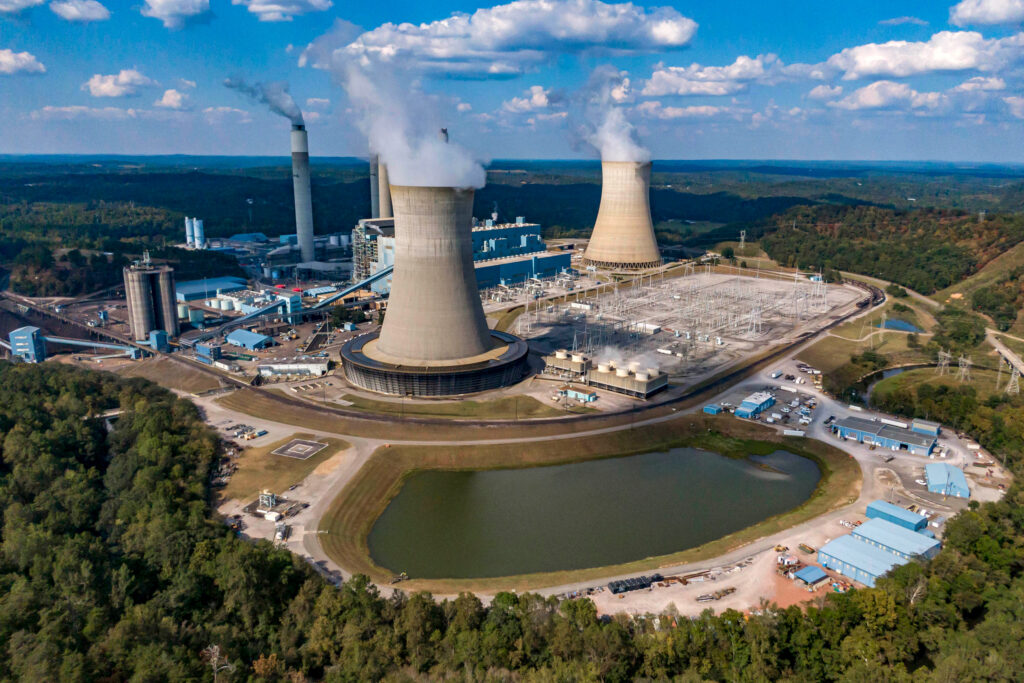A coal-fired power plant in Alabama has once again been named the top greenhouse gas emitter in the nation, according to data released Tuesday by the U.S. Environmental Protection Agency (EPA).
For the ninth year in a row, the James H. Miller Jr. Electric Generating Plant, operated by Alabama Power, was identified as the biggest single source of greenhouse gas emissions in 2023, based on the EPA’s Greenhouse Gas Reporting program.
Plant Miller emitted nearly 16.6 million tons of greenhouse gases in 2023, surpassing any single power plant, factory, or industrial facility in the country.
This figure is approximately 1.2 million tons more than Missouri’s Labadie Power Plant near St. Louis, which ranked second with about 15.4 million tons.
Power plants are the largest contributors to greenhouse gas emissions in the U.S., with 1,320 plants emitting around 1.5 billion tons of CO2 equivalent, according to an EPA news release from Tuesday.
Despite announcements from utilities to retire many large coal plants, Alabama Power has not disclosed any plans to retire or convert the four units at Plant Miller, unlike its other facilities in the state.
“The four units at Miller are among the largest and most efficient in the country,” an Alabama Power spokesperson told Inside Climate News last year.
Alabama Power declined to comment on the latest emissions data released on Tuesday.
Daniel Tait, executive director of Energy Alabama, criticized Alabama Power for overlooking cleaner and more cost-effective energy options by continuing to operate Plant Miller.
“Alabama Power’s operation of Plant Miller harms Birmingham and Central Alabama, ignoring cleaner alternatives available today,” Tait stated in an email.
Christina Tidwell, a senior attorney with the Southern Environmental Law Center, highlighted Plant Miller’s adverse environmental impacts beyond its carbon emissions.
“The plant emits pollutants like nitrogen oxides, sulfur dioxide, and mercury which harm human health and the environment,” Tidwell noted. “Plant Miller, located on a major tributary to the Black Warrior River, has a coal ash lagoon discharging toxic contaminants to water sources.”
According to EPA health data, individuals within a one-mile radius of Plant Miller are in the 95th to 100th percentile nationally for cancer risk and the 90th to 95th percentile for respiratory health issues.
Plant Miller has led as the nation’s largest greenhouse gas emitter since 2015, overtaking Georgia Power’s Plant Scherer near Macon. Before that, Miller consistently ranked in the top three since 2010.
While Plant Miller’s emissions have remained steady, other facilities have decreased emissions due to retirements or fuel conversion to natural gas. In 2023, Miller reported its lowest emissions at 16.6 million tons, down 500,000 tons from 2020. The company did not explain this reduction.
Alabama Power is a subsidiary of Southern Company, based in Atlanta, which also operates Georgia Power and Mississippi Power. Southern Company has committed to net-zero emissions by 2050, but clean energy advocates argue this goal is not mirrored in Alabama Power’s operational decisions.
“Alabama Power’s lack of action to close Plant Miller reflects a lack of commitment to its parent company’s net-zero target,” Tait said. “The utility demonstrates a modern form of climate denial or delay.”
Plant Miller’s 2023 emissions were higher than the entire country of Costa Rica, according to the Emissions Database for Global Atmospheric Research.
More than 8,100 U.S. industrial facilities reported greenhouse gas emissions in the previous year, with refineries being the second-largest source after power plants. Overall emissions decreased by about 4% from 2022.
In the electricity sector, emissions reduced by 7% from 2022 and by 34% since 2011, reflecting a shift from coal to natural gas, according to the EPA.
Original Story at insideclimatenews.org
